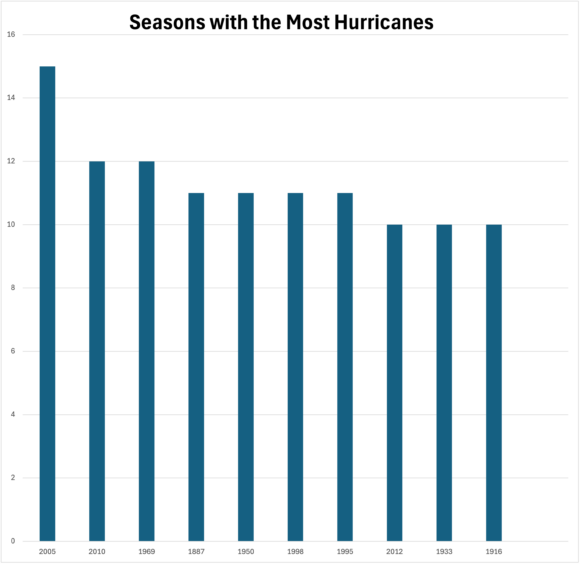Atlantic hurricane risk in the U.S. continues to increase “substantially as oceanic and atmospheric conditions reach a point where tropical cyclone formation” is becoming increasingly favorable, putting the season’s outlook on par with some past massive and destructive seasons, storm experts said on Tuesday.
On Monday, the National Hurricane Center designated a disturbance in the Gulf of Mexico as a potential tropical cyclone that has yet to be named, with tropical storm warnings in effect along the northeastern coast of Mexico and in southern Texas. Winds in excess of 39 MPH are expected over a large coastal stretch.
“While it’s not expected to be significant wind event from a large perspective, flooding is a potential threat to both life and property if you are located in northeastern Mexico or southern Texas,” said Jon Schneyer, director of catastrophe response at CoreLogic.
Schneyer led a panel of experts on a CoreLogic webinar on Tuesday to discuss the beginning of the hurricane season, and lay out the hurricane risk landscape across the country as an ominous season is now starting to unfold – June 1 marked the beginning of the hurricane season, which extends through the end of November. The other experts were David Smith, senior director of natural hazard science, and product managers Tal Paschal, Brian Sullivan and Jesse Delmas.
Related: Potent Hurricane Weather Pattern Continues to Take Shape, Forecaster Says
The climate has moved out of the El Niño phase and into an ENSO neutral phase (the El Niño-Southern Oscillation transition state between warm and cool phases). By late summer, we’re expected to go into a La Niña phase.
By all accounts, the hurricane season continues to shape up to be a big one.
The National Oceanic and Atmospheric Administration last month forecast an 85% chance of an above-average Atlantic hurricane season, with up to 25 named storms. Colorado State University’s tropical meteorology project in April forecast 23 named storms, 11 hurricanes and five major hurricanes.
AccuWeather meteorologists in March forecast an above-average Atlantic hurricane season with as many as 20 to 25 named storms.
Related: Catastrophe Bond Sales Soar as Markets Brace for Unusually Active Hurricane Season
Global insurer Allianz Commercial recently released its annual risk article on the season’s outlook, which calls out the good fortune in 2023. That was an above-average season, though only eight storms made landfall. Most of the storms, referred to as “fish storms,” stayed at sea.
The Allianz report summarizes the predicted number of tropical storm events for 2024 by six organizations. All of the forecasts indicate a season ahead to watch.

The CoreLogic webinar on Tuesday referenced a report on hurricane risk that points to more than 32.7 million residential properties at risk of moderate or severe damage sustained from hurricane-force winds from Texas to Maine. The number of at-risk homes in CoreLogic’s 2024 Hurricane Risk Report equates to a combined reconstruction cost of $10.8 trillion.
Smith detailed the 2024 hurricane season outlook and offered an assessment of the midpoint of each of the ranges of the forecasts that have so far come out.
“One theme here is that all the outlooks are really showing a highly active season,” he said. “Certainly at some level this is the most active forecast that NOAA has ever made, really showing the most elevated levels of activity in this forecast, and certainly well above normal with the ranges.”
Of the 17 to 25 named storms in NOAA’s outlook, eight to 13 are likely to become hurricanes, and four to seven of those are likely to become major hurricanes, Smith noted.
Smith said the data so far reflects weather developments ahead of other seasons that turned out to be big ones, putting this season’s potential on par with seasons like those including 1995 and 2005, “which you may remember, were very, very active, and also in terms of loss (were) very, very dramatic years.” Forecasts for 2024, he added, are for “way above normal, and if they’re at the top end of the ranges, it’s going to be really up there along with some of the most significant seasons.”
According to Weather Underground, 2005’s 28 named storms and 1995’s 19 named storms are on the list of the seasons with the most named storms. The 2005 season’s 15 hurricanes topped the list of the most hurricanes on record from 1851 to present. The 2005 season was second on the list of seasons with the most major hurricanes with seven, just behind the eight major hurricanes in 1950.
Was this article valuable?
Here are more articles you may enjoy.


 Truckers Who Fail English Tests Get Pulled Off Roads in Trump Crackdown
Truckers Who Fail English Tests Get Pulled Off Roads in Trump Crackdown  Standard Chartered Settles $2 Billion Iranian Sanction Suit in London
Standard Chartered Settles $2 Billion Iranian Sanction Suit in London  Atmospheric River to Flood Pacific Northwest Through Week
Atmospheric River to Flood Pacific Northwest Through Week  Toyota Unveils Concept LFA Supercar, and It’s Fully Electric
Toyota Unveils Concept LFA Supercar, and It’s Fully Electric 